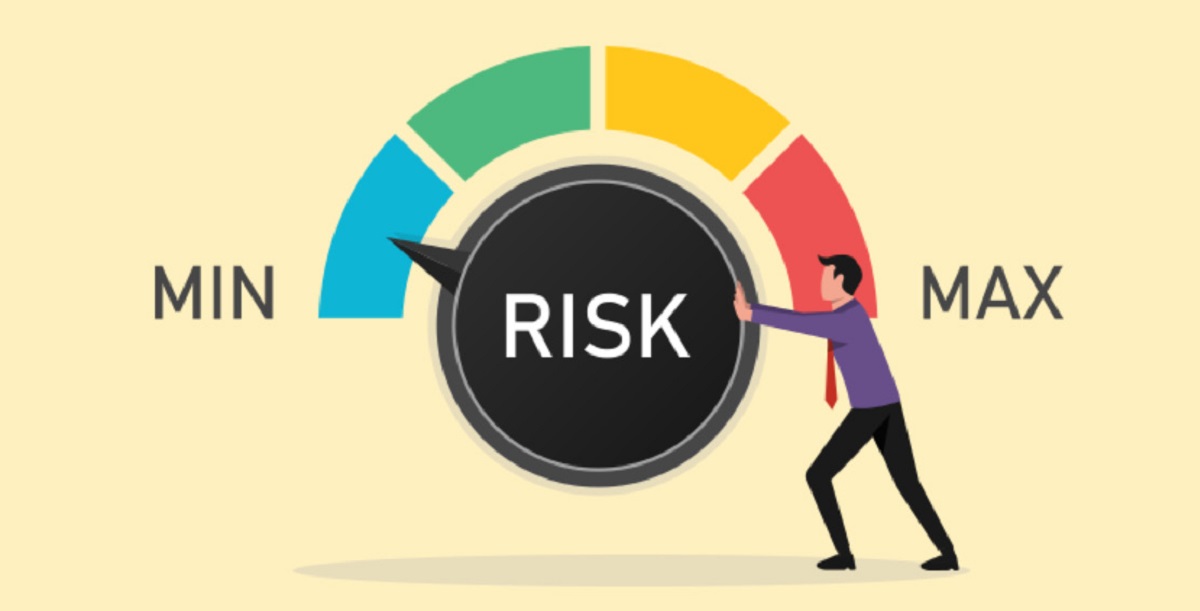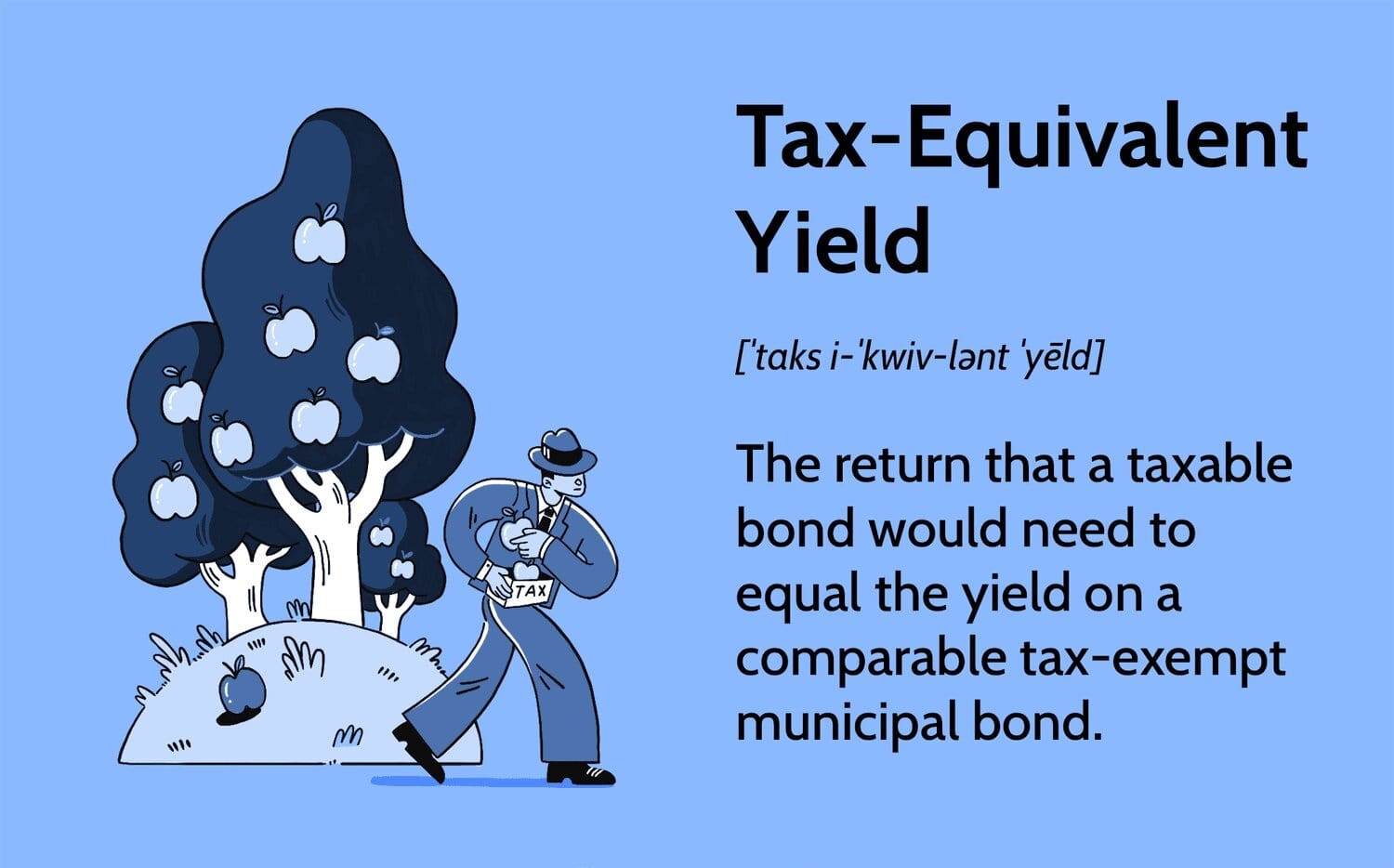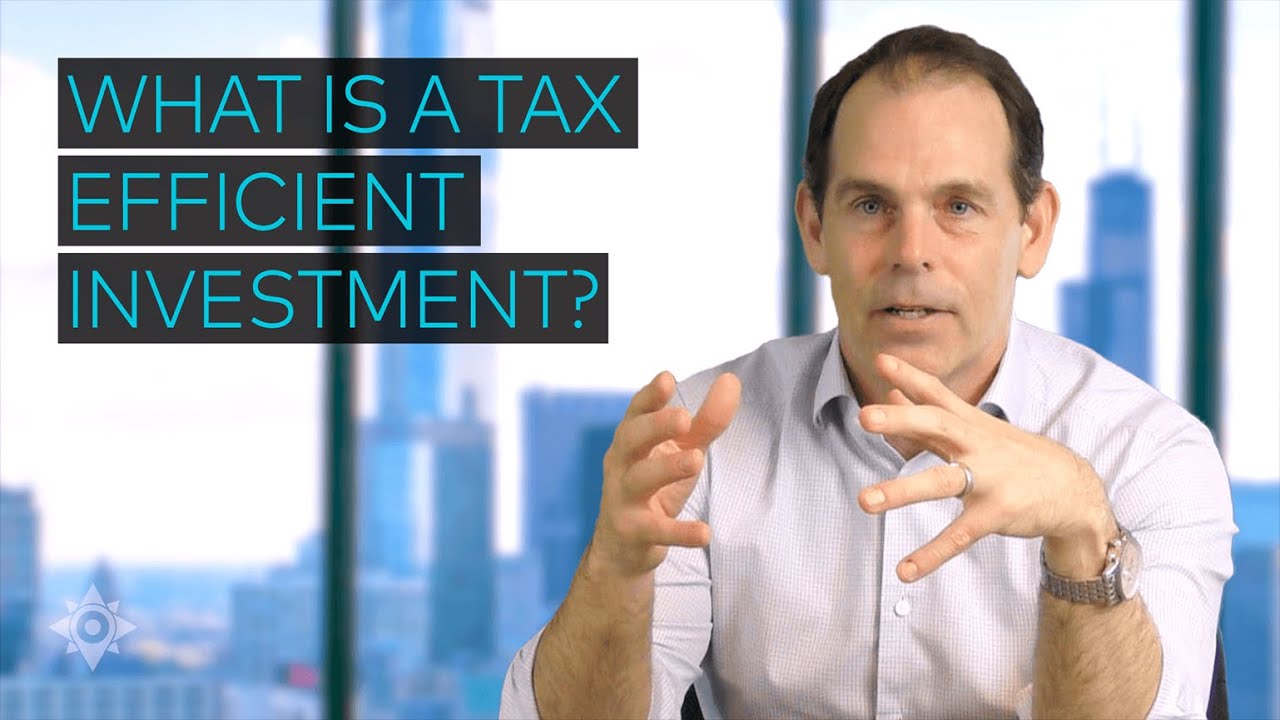Introduction
Investing in the financial markets is an effective way to grow wealth and achieve financial goals. However, along with the potential for significant returns, there is also an inherent risk involved in investing. Market fluctuations, economic uncertainties, and unexpected events can all impact the performance of your investments.
While it is impossible to eliminate risk entirely, there are strategies you can employ to minimize the risk from your investments. By understanding these strategies and implementing them effectively, you can protect your portfolio and increase the likelihood of achieving your financial objectives.
This article will explore various methods to minimize investment risk, including diversification, asset allocation, risk assessment, realistic expectations, regular monitoring, avoiding emotional decision making, staying informed, investing in quality companies, and maintaining a long-term perspective.
By the end of this article, you will have a comprehensive understanding of how to minimize risk in your investment portfolio and increase your chances of long-term success.
Diversification
Diversification is a fundamental strategy for minimizing investment risk. It involves spreading your investments across different asset classes, industries, and regions to reduce the impact of any single investment’s performance on your overall portfolio. By diversifying, you can potentially mitigate the effects of market volatility and protect yourself against the underperformance of specific investments.
One way to diversify is by investing in different types of assets, such as stocks, bonds, real estate, and commodities. Each asset class carries its own unique set of risks and returns, so by allocating your investments across multiple asset classes, you can effectively manage your risk exposure.
Furthermore, within each asset class, diversification can be achieved through investing in a variety of companies or securities. For example, if you focus solely on one company or industry, such as technology stocks, you run the risk of being heavily impacted by any negative developments in that particular sector. By spreading your investments across a mix of industries, you can lower the risk of losing a significant portion of your portfolio’s value due to the decline of a single stock or sector.
It’s important to note that diversification does not guarantee profit or protect against losses, and it does not ensure that your investments will always outperform the market. However, it can help reduce the potential impact of a specific investment’s poor performance on your overall portfolio.
To effectively diversify your portfolio, you should consider your risk tolerance, investment goals, and time horizon. It’s also advisable to regularly review and rebalance your portfolio to ensure that your asset allocation remains in line with your investment objectives.
In summary, diversification is a key strategy for minimizing investment risk. By spreading your investments across different asset classes and within each asset class, you can reduce the impact of any single investment’s performance on your overall portfolio. While diversification cannot eliminate risk entirely, it can help mitigate the effects of market volatility and protect your investments over the long term.
Asset Allocation
Asset allocation is another crucial strategy for minimizing investment risk. It involves determining the optimal mix of asset classes in your portfolio based on your risk tolerance, investment objectives, and time horizon. By properly allocating your investments across different asset classes, you can achieve a balance between risk and potential return.
The key concept behind asset allocation is that different asset classes have varying levels of risk and return. Generally, stocks are considered high risk-high reward, bonds are lower risk-lower reward, and cash and cash equivalents are considered low risk-low reward. By diversifying your portfolio across a combination of these asset classes, you can potentially achieve a more consistent return over time.
The specific allocation that is right for you depends on your individual circumstances and investment goals. For example, a young investor with a long-term horizon and higher risk tolerance might have a larger allocation to stocks, while a retiree looking for more stable income might allocate more to bonds and fixed-income investments.
It is important to regularly review and rebalance your portfolio to ensure that it remains aligned with your investment goals. This means periodically adjusting your asset allocation to maintain the desired risk and return profile. Market conditions and your personal circumstances may change over time, so it’s essential to monitor and make adjustments as necessary.
Asset allocation is not a one-size-fits-all strategy, and it requires careful consideration of your risk tolerance, investment objectives, and time horizon. Working with a financial advisor can help you determine the appropriate asset allocation for your specific needs and provide guidance on adjusting the allocation over time.
In summary, asset allocation is a critical strategy for minimizing investment risk. By diversifying your portfolio across different asset classes based on your risk tolerance and investment goals, you can achieve a balanced approach to investing. Regular monitoring and adjustment of your asset allocation can help ensure that your portfolio remains aligned with your long-term objectives.
Risk Assessment
Conducting a thorough risk assessment is an essential step in minimizing investment risk. Understanding the potential risks associated with your investments can help you make informed decisions and take appropriate measures to mitigate those risks.
When assessing risk, it’s important to consider both the specific investments you hold and the broader market conditions. Start by evaluating the risk factors associated with individual assets, such as a company’s financial health, industry trends, and competitive landscape. This analysis will provide insights into the potential risks and rewards of each investment.
Additionally, assessing market risk involves analyzing macroeconomic factors, such as interest rates, inflation, and geopolitical events, which can affect overall market performance. This macro-level assessment helps you understand the potential risks facing your portfolio as a whole.
One useful tool for assessing investment risk is the risk-reward tradeoff. Generally, higher-risk investments offer the potential for higher returns, while lower-risk investments tend to generate more modest returns. Therefore, it’s crucial to strike a balance between risk and reward based on your individual risk tolerance and investment goals.
To assist in risk assessment, various financial ratios and indicators can be used to evaluate the financial strength and stability of a company. Examples include the debt-to-equity ratio, earnings per share growth, and return on equity. These metrics can provide insights into the company’s financial health and its ability to weather market fluctuations.
Moreover, staying informed about market trends, economic developments, and geopolitical events is crucial for anticipating potential risks. Regularly monitoring financial news, reading research reports, and consulting with financial advisors can help you stay ahead of potential risks and adjust your investment strategy accordingly.
In summary, conducting a thorough risk assessment is key to minimizing investment risk. Evaluating the specific risks associated with individual investments and the overall market conditions can help you make informed decisions and take appropriate measures to mitigate those risks. By maintaining a balanced approach to risk and reward and staying informed, you can navigate potential pitfalls and protect your investment portfolio.
Setting Realistic Expectations
When it comes to investing, setting realistic expectations is crucial for minimizing risk and avoiding disappointment. It’s important to understand that investing involves a certain level of uncertainty, and returns can vary significantly over shorter periods of time.
One key aspect of setting realistic expectations is understanding historical market performance. By looking at long-term data, you can gain insights into the average returns of various asset classes and the historical volatility of the market. This can help you set realistic return expectations based on historical trends.
It’s also important to consider your investment goals and time horizon when setting expectations. Investments that are intended for short-term goals might have different risk and return profiles compared to those aimed at long-term goals, such as retirement. Align your expectations with your specific investment horizons to ensure a realistic outlook.
Avoid falling into the trap of chasing high returns or trying to time the market. Unrealistic expectations, such as expecting to consistently beat the market or earn unusually high returns, can lead to impulsive or risky investment decisions. Instead, focus on a well-diversified and disciplined investment approach that aligns with your risk tolerance and long-term objectives.
Another important factor in setting realistic expectations is considering the impact of fees and expenses. Investment expenses, such as management fees or transaction costs, can eat into your overall returns. Understanding the fees associated with your investments will help you assess the net returns you can realistically expect.
Lastly, remember that investing is a long-term journey. Short-term market fluctuations and volatility are inevitable, but over the long term, the market generally trends upward. Setting realistic expectations and maintaining a long-term perspective can help you weather short-term volatility and avoid making emotional investment decisions based on short-term market movements.
In summary, setting realistic expectations is crucial for minimizing investment risk. By understanding historical market performance, aligning expectations with investment goals and time horizons, and avoiding unrealistic and impulsive decisions, you can maintain a disciplined approach to investing. Setting realistic expectations will help you stay focused on your long-term objectives and reduce the risk of making poor investment choices.
Regular Monitoring and Adjustment
Regularly monitoring your investment portfolio is essential for minimizing risk and ensuring that your investments are aligned with your objectives. The financial markets are dynamic, and market conditions can change rapidly. By staying proactive and making necessary adjustments, you can adapt to market fluctuations and minimize potential risks.
Monitoring your investments involves keeping track of market trends, news, and updates. Stay informed about economic indicators, company-specific developments, and any geopolitical events that may have an impact on your investments. This information will help you make informed decisions and take appropriate action when needed.
One important aspect of monitoring your portfolio is reviewing your asset allocation. Over time, the performance of different asset classes may vary, causing your portfolio to deviate from your original allocation. Regularly reassessing your asset allocation and rebalancing as necessary can help maintain the desired risk profile. This entails selling investments that have appreciated significantly and reinvesting in underperforming areas to bring the allocation back in line with your target.
Furthermore, periodically reviewing the performance of individual investments is crucial. Assess whether your investments are meeting your expectations and are still aligned with your investment strategy. Investments that consistently underperform or no longer fit your goals may need to be replaced or adjusted.
Monitoring your portfolio also entails evaluating the fees and expenses associated with your investments. Keep an eye on whether the fees are reasonable and provide value in relation to the investment’s performance. If necessary, explore alternative investment options or negotiate for lower fees.
It’s important to note that while regular monitoring is essential, it’s equally crucial to avoid overtrading or making impulsive decisions based on short-term fluctuations. Stay focused on your long-term investment strategy and avoid reacting to temporary market movements. The key is to find the balance between vigilance and a disciplined approach.
Consider working with a financial advisor who can provide guidance and help you navigate the complexities of monitoring and adjusting your investment portfolio. A professional can offer expertise, objective analysis, and personalized recommendations based on your individual circumstances and goals.
In summary, regular monitoring and adjustment are critical for minimizing investment risk. By staying informed, reviewing your asset allocation, assessing individual investments, evaluating fees, and avoiding impulsive decisions, you can ensure that your portfolio remains aligned with your investment objectives. Regular monitoring allows you to adapt to changing market conditions and reduce potential risks over time.
Avoiding Emotional Decision Making
Emotions can cloud judgment and lead to irrational decision-making, especially when it comes to investing. Emotional reactions to short-term market fluctuations can cause investors to make hasty and potentially costly decisions. Avoiding emotional decision-making is essential for minimizing investment risk and maintaining a disciplined approach.
One of the primary emotions that can lead to poor investment decisions is fear. During periods of market downturns or volatility, it’s natural to feel anxious or fearful about the state of your investments. However, selling assets in a panic or making drastic portfolio changes based on fear can often result in selling low and missing out on potential future gains.
On the other end of the spectrum, greed can also drive irrational decision-making. FOMO (fear of missing out) can lead investors to chase high returns and take on excessive risks. Making investment decisions solely based on the fear of missing out on potential gains can result in investment choices that are not aligned with your risk tolerance or long-term goals.
To avoid emotional decision-making, it’s important to have a well-defined investment plan and stick to it. This plan should be based on your risk tolerance, time horizon, and investment objectives. By having a clear plan, you can avoid impulsive reactions to short-term market movements and stay focused on your long-term strategy.
Another strategy to counteract emotional decision-making is to practice disciplined investing. This involves setting predetermined criteria for buying or selling investments and sticking to those criteria regardless of emotions or market fluctuations.
It can also be helpful to have a support system in place, such as a trusted financial advisor or investment mentor. These individuals can provide objective advice and guidance, helping you stay grounded and make rational decisions based on your long-term goals.
Lastly, maintaining a long-term perspective is vital for avoiding emotional decision-making. Remember that investing is a marathon, not a sprint. Short-term market fluctuations are normal and should not be the sole catalyst for changing your investment strategy. Keeping your eye on the long-term goals and the bigger picture can help prevent knee-jerk reactions and emotional decision-making.
In summary, avoiding emotional decision-making is crucial for minimizing investment risk. Fear and greed can lead to poor investment choices and hinder long-term financial success. By having a well-defined plan, practicing disciplined investing, seeking guidance when needed, and maintaining a long-term perspective, you can make rational decisions that align with your investment objectives and reduce the impact of emotions on your portfolio.
Staying Informed
Staying informed about the financial markets and the factors that can impact your investments is crucial for minimizing risk and making informed decisions. By staying up-to-date with market trends, economic developments, and company-specific news, you can navigate potential risks and seize opportunities.
One of the key ways to stay informed is by regularly consuming financial news and analysis. Follow reputable sources that provide accurate and insightful information about the markets, including independent research reports, financial publications, and online news platforms. This will help you stay abreast of current events and trends that may impact your investment decisions.
Attending seminars, workshops, and webinars can also be valuable for staying informed. These educational events provide opportunities to learn from industry experts, gain new insights, and expand your knowledge base. Additionally, participating in investment-related forums and online communities can help you engage in discussions with like-minded individuals and exchange ideas.
Another important aspect of staying informed is conducting thorough research on the investments you are considering or currently hold. Understand the fundamentals of the companies or assets you are investing in, including their financial health, competitive positioning, and growth prospects. This will help you make informed decisions and assess the potential risks and rewards of your investments.
Keep an eye on economic indicators and macroeconomic trends that can influence the overall market. Understand how factors such as interest rates, GDP growth, inflation, and geopolitical events can impact your investments. This broader understanding of the economic landscape will help you make more informed decisions and anticipate potential risks or opportunities.
Additionally, regularly reviewing your investment portfolio and performance reports can provide valuable insights. Analyze the performance of individual assets and evaluate whether they align with your investment objectives. If necessary, make adjustments or reallocate your investments to optimize your portfolio’s risk-reward profile.
It’s worth noting that staying informed does not mean succumbing to information overload or constantly obsessing over every minute market movement. Avoid becoming overwhelmed by excessive information and focus on the key factors that are relevant to your investment strategy and goals. Having a clear filter for the information you consume will help you stay focused and make better-informed decisions.
In summary, staying informed is crucial for minimizing investment risk. By actively seeking out information from reputable sources, conducting thorough research, staying abreast of economic indicators, and regularly reviewing your portfolio, you can make better-informed investment decisions. Staying informed allows you to navigate potential risks, seize opportunities, and align your investments with your long-term objectives.
Investing in Quality Companies
Investing in quality companies is a fundamental strategy for minimizing investment risk. By focusing on companies with strong fundamentals, proven track records, and competitive advantages, you can increase the likelihood of generating consistent returns and reduce the risk of significant losses.
One key characteristic of a quality company is a solid financial position. Look for companies with low levels of debt, healthy cash flow, and a history of consistent earnings growth. A company with a strong balance sheet and robust financials is better equipped to weather market downturns and economic uncertainties.
Furthermore, consider the company’s competitive advantage or unique market position. Companies with a strong moat, such as a well-established brand, proprietary technology, or a large customer base, are more likely to sustain their competitive edge and generate long-term profits. These companies are often better positioned to navigate industry disruptions or economic downturns.
Assessing the management team is another crucial factor when investing in quality companies. Look for a strong and experienced management team with a proven track record of making sound business decisions and delivering results. A skilled management team can drive innovation, navigate challenges, and create long-term value for shareholders.
Additionally, evaluate the company’s growth prospects. Invest in companies that have a clear growth strategy and are positioned to benefit from industry trends and long-term market demands. A company with a strong growth trajectory not only provides potential for capital appreciation but also reduces the risk of stagnation or decline.
Research and analysis play a crucial role in identifying quality companies. Conduct thorough due diligence by reviewing financial statements, analyzing industry trends, and studying the company’s competitive landscape. Utilize research reports, company filings, and expert analysis to gather insights into the company’s operations, growth prospects, and potential risks.
It’s important to note that investing in quality companies does not guarantee a risk-free investment. It’s still essential to assess the risks and potential downsides associated with any investment. Diversification and risk management should be considered alongside investing in quality companies to build a well-rounded and balanced portfolio.
Investing in quality companies requires a long-term perspective. Short-term market volatility and fluctuations may impact the value of your investments, but high-quality companies with solid fundamentals and growth potential tend to perform well over the long run. Patience and discipline are key when investing in quality companies.
In summary, investing in quality companies is a sound strategy for minimizing investment risk. By focusing on companies with strong financials, competitive advantages, experienced management teams, and growth prospects, you can increase the likelihood of generating consistent returns and reduce the risk of substantial losses. Thorough research, analysis, and a long-term perspective are essential when selecting and investing in quality companies.
Long-Term Perspective
A long-term perspective is essential for minimizing investment risk and achieving financial success. Investing with a focus on the long-term horizon helps mitigate the impact of short-term market volatility and allows you to capture the potential benefits of compounding returns over time.
One of the key advantages of a long-term perspective is the ability to ride out market fluctuations. Short-term market volatility is inevitable, and reacting to it with impulsive decisions can be detrimental to your portfolio’s performance. By maintaining a long-term perspective, you can avoid making emotionally driven decisions based on temporary market movements.
Investing with a long-term view also allows you to harness the power of compounding returns. Over time, your investments have the potential to generate earnings, dividends, and capital appreciation, which can be reinvested to further enhance overall returns. By giving your investments time to grow, the compounding effect can significantly boost your wealth over the long run.
Furthermore, a long-term perspective provides flexibility and resilience in the face of economic uncertainties and market downturns. Rather than trying to time the market or make short-term predictions, focusing on the long term allows you to weather market cycles and take advantage of opportunities that arise during turbulent times.
Avoiding frequent trading and excessive portfolio turnover is another benefit of a long-term perspective. By minimizing transaction costs and capital gains taxes, you can preserve more of your investment returns over the long run. High portfolio turnover can erode your investment gains and increase costs, making it more difficult to achieve your financial goals.
Keep in mind that a long-term perspective does not mean a “set it and forget it” approach. Regular monitoring, portfolio rebalancing, and periodic reviews are still important to ensure that your investments remain aligned with your long-term goals. However, the key is to make thoughtful adjustments and changes based on a well-defined investment strategy rather than reacting to short-term market noise.
In summary, adopting a long-term perspective is crucial for minimizing investment risk and maximizing potential returns. By focusing on the long-term horizon, you can withstand short-term market fluctuations, benefit from the compounding effect, and remain resilient in the face of economic uncertainties. Remember to regularly review and rebalance your portfolio, but avoid impulsive decisions based on short-term market movements. Investing with a long-term view sets the foundation for achieving your financial goals and securing your financial future.

























